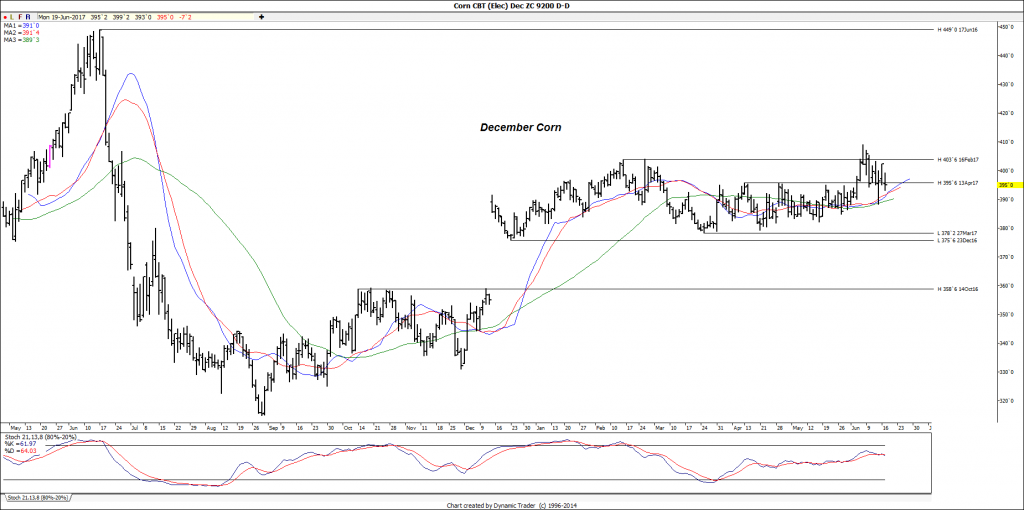By: Dan Hueber –
The wheat market has extended higher from the impressive strength we witnessed as markets wrapped up last week and to a lesser extent so has the bean trade, but the same cannot be said of corn at this point. While December corn did finish the week lower last Friday, it was still the highest close posted during the week and marked the second consecutive close above resistance at 3.96. Be that as it may, it would appear that there was enough moisture across the Midwest over the weekend and possibly more importantly, a break in the temperatures that appears to have “cooled-off” the buying interest that had developed, at least for the time being. The weather forecasts that I have read this morning suggest that extreme heat will be concentrated in the Southwest, and while I know it sounds shocking to hear it will be hot in the desert in late June, it is not expected to move out of that region for at least the next week. Of course, one of the many quandaries that leaves us with at this time is that often, we look to this late June/early July period for excitement and opportunity in the corn market and currently, there would appear to be little of either.

The United States and China have now agreed on conditions for resuming U.S. beef trade into that country and from the sounds of the reports, Chinese consumers are literally chomping at the bit to get a taste of a N.Y. strip or juicy ribeye. Total beef sales in China last year grew around 4% to 5.9 million metric tons and of course opening the doors for our products should not only allow us to capture some of the expanding demand but realistically will mean we take away business from Australia and New Zealand. Already, American Beef is considered to have superior taste to that from our friends in the Southern Pacific region, (and who am I to argue) but is currently more competitively priced as well. Note as well that Chinese hog farmers continue to build herds and by extension, demand for feed, which again should be a long-term reminder to us that increasing global income demographically translates into more protein rich diets, which translates into higher grain consumption.
Of course, maybe there is one segment of the high protein food production that farmers in the United States have been overlooking. For years those in the business of producing field crops have waged war against insects and as it turns out, maybe we should be producing them instead of trying to wipe them out. According to the UN Food and Agricultural Organization, with the population forecast to reach nearly 10 billion people by 2050, edible insects could play a major role as a protein source. The edible insect market is already a $100 million industry and is expected to grow to around $1.5 billion by 2021. This also translates to opportunities in the insect “feed” business which currently generates around $30 million in annual sales and is projected to climb over the $1 billion mark by 2022. Granted, I would not expect to see a heaping plate of fried grasshopper displace the turkey at the next Thanksgiving dinner but insects are already consumed by around 2 billion people and as the above forecasts would suggest, the figure is expected to grow. I understand that cricket powder is used in protein shakes and cookies so maybe you should read the label a bit closer if this topic is not sounding appetizing. It turns out though that there a lot of companies are “swarming” to get into this business in the U.S., so if you an interested in taking a “swat” at it, you should probably do your entomology homework first. The entire prospect of “cricket ranching” or operating a “grasshopper feedlot”, seems a bit far fetched and could even “bug” some people so for those, maybe they should just ignore all the “buzz.”